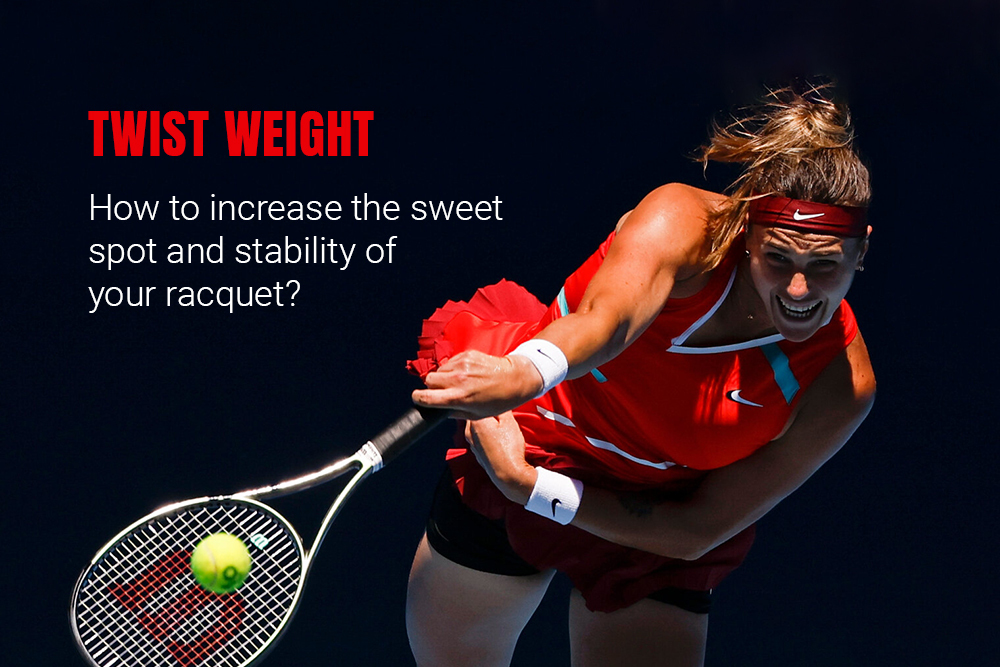Ever played against a hard hitter and felt your racquet wobble in your hand? let's have a look at how increasing twistweight might help increase the racquet's stability when contact is made outside the sweet spot.
In our previous tennis "Racquet Lingo" blog, we covered the topic "swingweight", which is an important aspect that contributes to a racquet's playing characteristics. Although twist weight isn't as frequently discussed as compared to swingweight, it has a very big influence on how it affects a tennis racquet. Let's discuss what really is twistweight, its pros and cons , and who may benefit from having higher or lower twistweight, how to increase/decrease twist weight.
What is Twistweight?
Twistweight (also known as the polar or roll moment of inertia) is a measure of the stability of the racquet to resist twisting around the racquet’s long axis. If you hit a ball dead smack in the center of the head, the racquet will recoil, but not twist around its long axis. If you hit a ball and inch or so away from the axis toward the 3 o’clock or 9 o’clock side of the strung area, in addition to recoiling, the racquet will twist around its long axis, the farther the contact is from the center of the racquet, the higher the racquet would twist which would result in more loss of power and stability. In simple words, bigger the racquet’s twistweight, the less the racquet will twist when the ball is struck off center which makes it more stable against miss-hits.
High twistweight is good for blocking and pushing the ball around. It requires a more linear swing path (flat) and is more forgiving and less maneuvrable. You might benefit from such rackets if you don’t hit the ball cleanly, have bad timing etc. or if you have a flatter swing path, for example Djokovic uses a very high twsitweight which is a perfect match for the way he strikes the ball.
Low twistweight allows you to make more microadjustments at the last second before striking the ball, which means you can perfect your strokes, you can quickly adjust the racket face position, you can hit whippier shots and it rewards good technique, and clean ball striking. Low twistweight means you can increase the swingweight and still have a maneuvrable racket.
How to increase/decrease Twistweight?
It isn't possible to decrease twsitweight, but it is possible to increase twistweight by adding lead tape at 3&9 a clock positions on the racquet, note that adding lead tape at 3 and 9 will also increase the swingweight and affect the balance of the racquet, so it is recommended to start with very small amounts of weight and counter balance the weight in the handle (for queries regarding racquet customisation, contact tennishub racquet experts).













Comments